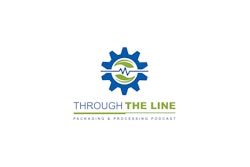Berner Food and Beverage of Roscoe, IL, a family-owned business begun more than 60 years ago, has built its reputation on providing brand-equivalent private-label processed cheese and dip products to most of the major retailers nationwide. Two years ago, Berner drew upon its core competency in dairy to shore up off-season sales by offering dairy-based, shelf-stable coffee drinks.
“September through January is really the season for cheese snacks, whereas the beverage business peaks in spring and lasts until late fall,” explains Berner president and CEO Stephen A. Kneubuehl. “We wanted to even out our sales and diversify our risk by broadening our bundle of products.”
In early 2008, Berner tested the waters, installing a filler capable of handling aluminum cans from 6.5 to 15 oz. Recalls Berner operations manager Scott Chehak, “Our investment was to get into the latte business and see what happened.” With the introduction later that year of bottled latte beverages by a leading retailer of coffee drinks, the business broke wide open. Berner was quick to respond, installing a new, highly automated bottle filling line, equipped with two new retort systems from Allpax Products LLC, a division of Pro Mach. Since then, the company has doubled its output and anticipates even greater growth in the future. “We are expecting very large growth in that department,” Chehak says, “so we have expanded ourselves to be ready.”
Efficiency is key to remaining competitive
Berner’s Afolkey, IL, manufacturing plant—a 100,000-sq-ft, SQF2000 Level 3 facility—is located in the middle of a sea of Midwestern cornfields and dairy farms, and was literally built around the founders’ boyhood home. Approximately 200 employees staff the plant, which has been infused with more than $15 million in capital over the last several years to fuel the company’s growth.
As Chehak relates, Berner competes with major brand-name products through a full R&D department that creates custom products formulated to offer the same quality, taste, and consumer satisfaction as brand labels. “We are a private-label manufacturer, so we want to be sure that our customers can get comparable products that cost less. We basically make the same products, but we have less overhead.”
To remain competitive, processing and packaging efficiency is key. That’s why Berner’s new dairy-based beverage packaging equipment was selected with automation, easy changeover, and flexibility in mind.
Following the purchase of a Solbern Model LFF-72 cascade waterfall liquid filler for canned product in early 2008, Berner added a net-weight rotary electronic bottle filler from Weightpack that November. The 40-head gravity-metering filling system uses electronic self-correction to ensure bottle fill weights within a ±2-g tolerance.
“We had a cam/piston filler that was very inaccurate,” relates Chehak. “It would give us weight fluctuations resulting in a lot of giveaway or a lot of product going down the drain.” Another consideration was quality perception: Because the beverages are sold in glass bottles, having a consistent fill level across packages on-shelf is important.
“We calculated that the money we would save on fill-weight accuracy would pay for the machine within six months, never mind the speed it would gain us and the usability derived,” Chehak adds.
The carousel-style filler weighs each bottle before, during, and after filling. If an off-weight bottle is detected going into the filler, the machine will not fill the package. Reject lanes after the filler receive empty and filled off-weight bottles. The machine is capable of speeds up to 400 bottles/min, but Berner operates around 265/min for 9.5-oz latte beverages.
At presstime, Chehak says Berner will soon be expanding to a 13.7-oz glass bottle size, as well as a 20-oz plastic bottle, with flexibility enabled by the machine’s range of changeparts.
On the day of Packaging World’s visit to the Afolkey plant, the line was running a private-label product for a large national retailer. The beverage, as with all coffee drinks prepared at Berner, is a custom formulation that is brewed and blended on-site using the company’s proprietary new batching system, capable of processing up to 20,000 lb coffee/hr.
Automation results in consistency, flexibility
In January 2009, Berner added its first Allpax 1600 water immersion retort system, along with semi-automated loading and unloading systems. The second Allpax was installed in January 2010. While the first unit requires two operators to load and unload, the second can be handled by just one. “So it’s a lot of labor savings for us,” Chehak says, adding that Berner hopes to upgrade to a fully automated system in the future.
The Allpax loader—fed with product from either the bottle or the can line—receives sealed containers from an infeed conveyor and forms a layer pattern on an accumulation table. The loader then uses a servo-driven sweeper arm to transfer the layer into a retort basket sitting on a cart positioned at the end of the table. After each layer is formed, an operator manually covers it with a rubber pad. Each basket holds five layers, resulting in an average capacity of 2,000 containers/basket. Once a basket is filled, operators wheel it over to one of the two retort systems and load it onto the rails of the process vessel for processing.
Each retort can hold up to four baskets at one time, with each basket taking approximately 45 minutes to cook and cool. “In theory,” says Chehak, “we could have eight of them cooking at the same time, but we have enough baskets to keep the system cycling constantly.”
After a basket of product is finished processing, operators wheel it to the unloading system, which sits parallel to the loader. The unloader removes product from the basket layer-by-layer, while spraying the container tops with a sanitizer. The Allpax unit then single-files the bottles, which are conveyed to upstream labeling and packing operations.
Changeover of the retort system from bottles to cans is made simple through automated process control, Chehak relates. “It’s all programmed in,” he says. The retort system is operated through the AllView retort controller interface, which includes Allen-Bradley hardware and software. Software controls and container-specific machine settings enable tool-less changeover of most containers in less than 30 minutes.
Option for cans or bottles
To round out its shelf-stable beverage-packaging line, Berner has acquired a range of complementary equipment, most of it new and highly automated. On the front end, as noted, Berner can fill either cans or bottles, with two dedicated lines.
The can filling line begins with an automatic bulk depalletizer, the Busse SJI Classic W Series™ from Busse/SJI Corp., an Arrowhead Systems, Inc. company. The unit removes the cans from a pallet layer-by-layer and single-files them onto a conveying system, supplied by A+E Conveying Systems.
Cans are carried to a Pur-Rinse air rinser from A+E before being conveyed into the Solbern filler. There, cans are indexed along a drag chain as beverage is continuously poured over their open tops. Filled cans receive a dose of nitrogen from a Vacuum Barrier Corp. Nitrodose® system, after which they are seamed on a rebuilt PS Angelus seamer from Certified Can Machine Co. at speeds to 500 cans/min.
The last step before retort is inspection via a Teledyne Taptone x-ray system and squeezer, which check for fill height and pressure, respectively. “The right fill height is essential to ensure proper retort for food safety,” Chehak explains. “The squeezing belts make sure there is enough nitrogen in the can, otherwise it will explode during retort.”
In contrast, bottling begins with manual depalletizing of the containers onto a bulk infeed conveyor that then narrows to a single lane. The containers are carried into an Orbit bottle rinser from McBrady Engineering where they are inverted and flushed with ionized air. A long conveyor leading from the rinser to the Weightpack filler follows, providing 100 feet of surge capacity. After bottles are filled, they are capped with metal closures using a vacuum steam capper from Tecnocap. Sealed bottles then move through a ScanTrac x-ray inspection system from InspX that checks for missing lids, contaminants, and overfills.
Before being sent to the retort system, each bottles receives a code printed by a Videojet system that uses color-changing ink. Originally black in color, the ink changes to red after thermal processing, providing a visual quality check that products have been retorted.
Retort, end-of-line functions are shared
As noted, both the bottling line and the canning line share the same retort system, as well as the same end-of-line packing equipment. For bottles, such as the product packaged on the day of PW’s visit, the next step after retort is conveying past a bank of blowers that removes any remaining water on the bottles. The conveyor leads to an Intersleeve® shrink-film label applicator and shrink tunnel from Fuji Seal Machine Group that apply labels at 300/min.
After labeling, bottles are printed with a date code, blend number, and time using a Videojet printer, after which another Teledyne TapTone inspection system checks for popped tops. For cans, a changepart on the Fuji labeler allows them to move right through the system and on to another squeeze test through the Teledyne Taptone system.
Next on the line, Berner has installed a new Standard-Knapp 939EZ drop packer that loads cans or bottles into trays formed by an Adco Model CTF 470VF high-speed corrugated tray former at 40 trays/min. On the day of PW’s visit, Berner was loading a 15-bottle pack in a 5X3 configuration, but Chehak says its tray configurations can vary widely—“everyone wants something a little different,” he says. That’s why Standard-Knapp’s system of color-coded changeparts has been such an advantage, he adds. “Changeover is very rapid,” he says.
After trays are packed, they pass by a Marsh PatrionPlus® large-character ink-jet printer from Videojet that adds a best by date to the side panel. The trays are then carried into a KHS Kisters 801-T shrink-film applicator that wraps the tray in film. Manual palletizing follows.
Exceeding expectations
On all fronts, Berner is thrilled with the performance and efficiency of its new packaging lines. “We are half the head count we were two years ago, putting out a couple hundred thousand more pounds per month,” says Chehak. “Our employees have really taken to the equipment and have learned it well.”
Since 2008, Berner’s output has increased from 1.5 million bottles/year to 10 million. Regarding product quality, Chehak says it has gotten “tremendously better.” He explains: “The new equipment has allowed us to be more consistent. Consistency drives quality and also drives efficiency.
“Our motto here is do it right the first time; you never know if you will have a second chance. In the last two years, we have expanded the company—we are seeing growth, we are seeing the opportunity. That’s what happens when you take steps for the future.”


















